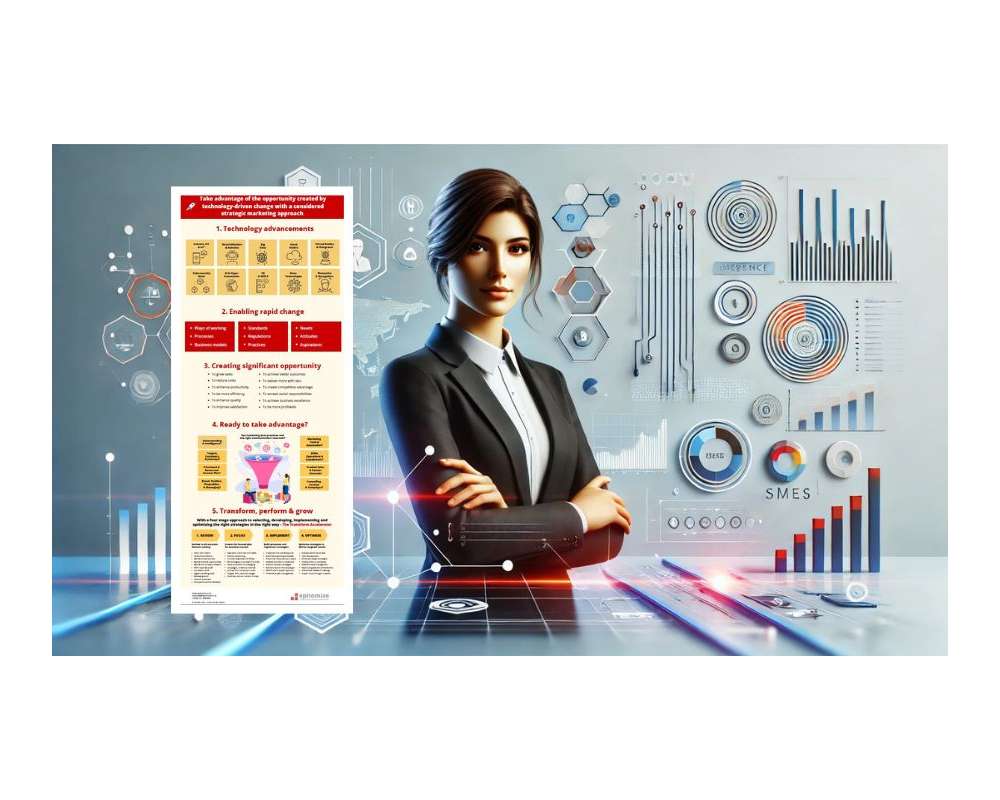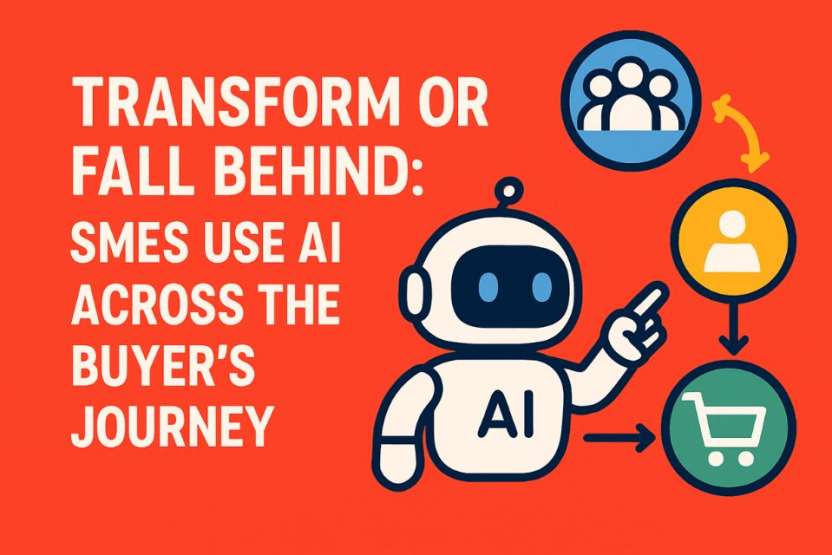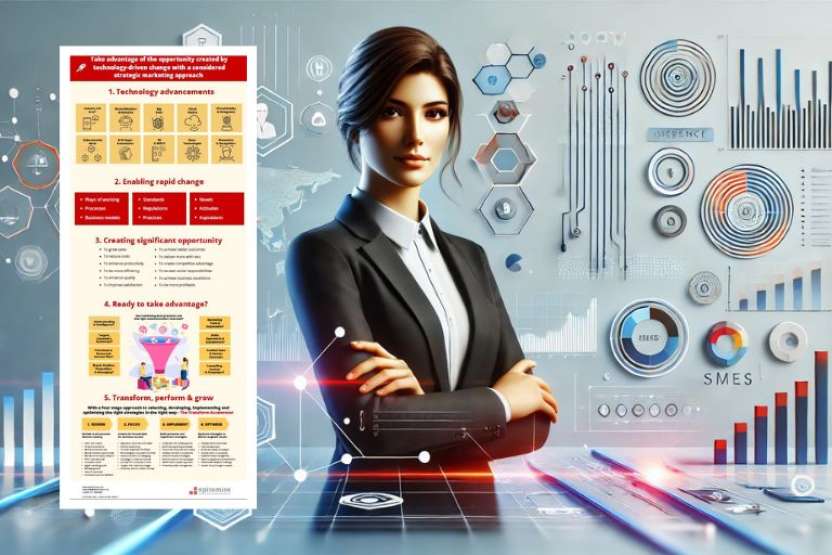Transform & Grow: A Strategic Approach to Technology-Driven Change for SMEs
The Rapid Pace of Technological Advancements
Technology has transformed our world at an astonishing rate. Just two decades ago, Bluetooth was a new concept (introduced in 1999), and social media was in its infancy - Myspace had fewer than a million users, and Facebook hadn’t even launched. The first YouTube video went live in 2005, Amazon Web Services (AWS) launched in 2006, and Apple changed the game with the first iPhone in 2007. Fast forward to today, and these innovations have reshaped how businesses operate.
As technology advances, barriers related to speed, storage, power, and connectivity are rapidly diminishing, enabling new ways of working that were previously impossible. For example, over the last decade, lithium-ion battery production has become 85% cheaper, making electric vehicles and energy storage commercially viable for the first time. This single breakthrough will drive massive industry shifts over the next ten years.
The Next Wave of Technology Disruption

Several key technological advancements are poised to shape the future of business:
- Industry 4.0 & IoT: The trend toward greater interconnectivity and the adoption of smart automation and predictive maintenance remains a key driver in modern industries.
- Electrification & Robotics: The shift away from fossil fuels toward electrification, along with the integration of robotics in transportation, manufacturing, and logistics, continues to evolve.
- Big Data: The collection and analysis of large datasets remain central to making data-driven decisions and personalising customer experiences.
- Cloud Native: Cloud-based infrastructures continue to offer scalability, cost efficiency, and collaboration benefits, which are increasingly adopted by businesses.
- Virtual Reality & Holograms: While VR and holographic technologies are still maturing, they are making inroads in areas like retail, training, healthcare, and entertainment.
- Cybersecurity Mesh: This modern approach to cybersecurity is gaining traction as it addresses the challenges posed by decentralised networks.
- AI & Hyper Automation: Artificial intelligence is driving automation at an unprecedented scale, optimising business operations and reducing costs. Tools such as ChatGPT, Baird, Anthropic, Perplexity exemplify how advanced language models are being integrated into customer support, content creation, data analysis, and even decision-making processes. These AI solutions enable businesses to streamline workflows, improve efficiency, and foster innovation by automating routine tasks while enhancing human capabilities. Consequently, the adoption of AI is reshaping industries and redefining competitive dynamics.
- 5G & WiFi 6/7: Enhanced connectivity provided by these technologies is opening up new possibilities for real-time data exchange and digital transformation.
- Nano Technologies: Ongoing advances in nanotechnology are expected to fuel innovations in medicine, energy, and materials science.
- Biometrics & Recognition: These security measures, including facial recognition and fingerprint scanning, are increasingly becoming standard.
The businesses that embrace these changes will be the ones that stay ahead of the competition. Those that don’t risk falling behind in an increasingly digital and automated world.
How Technology is Creating Business Opportunities
Technology isn’t just about innovation - it’s about creating real business value. The ability to connect machines, streamline operations, and analyse data more efficiently presents opportunities for companies to:
- Improve efficiency and reduce costs by automating processes and utilising AI-driven insights.
- Enhance customer experiences through hyper-personalisation and real-time support.
- Expand into new markets by leveraging digital platforms and data-driven marketing.
- Increase competitiveness by adopting smart technology that accelerates productivity.
A simple example is home security. A decade ago, installing a surveillance system was expensive and complex. Today, affordable, wireless, battery-powered security cameras can be monitored from anywhere via a smartphone app. Businesses can apply the same principle - leveraging technology to create smarter, more efficient processes that drive growth.
The Industrial Revolution 4.0
In manufacturing and industrial sectors, the concept of Industry 4.0 - connecting machines and devices through IoT - represents a significant transformation. Companies that integrate smart automation into their operations can achieve:
- Faster production cycles
- Predictive maintenance that prevents costly breakdowns
- Real-time supply chain tracking for better inventory management
For example, modern vehicles contain up to 200 microprocessors, collecting data that can be transmitted over 5G to inform drivers, insurance companies, and service centres about maintenance needs. The same principle applies across various industries - from smart agriculture using sensor-equipped machinery to predictive analytics optimising healthcare treatments.
The Risks of Not Adapting
While technology presents huge opportunities, it also creates new risks for businesses that fail to adapt. Consider companies like Kodak, Nokia, and Blockbuster - once industry leaders that lost relevance because they didn’t pivot fast enough.
Your competitors are likely already implementing AI-driven automation, digital-first marketing strategies, and cloud-based systems. If you don’t keep up, you risk:
- Losing market share to more agile competitors
- Reduced efficiency and higher operational costs
- Missing out on new revenue streams driven by digital transformation
Are You Ready to Take Advantage of These Changes?
The key to success in a fast-changing digital landscape is having a strategic plan. Without a clear roadmap, businesses can struggle to filter out hype from real opportunities and make the right investment decisions.
To stay ahead, you need to:
-
Understand emerging technologies and how they impact your industry.
-
Identify opportunities that align with your business goals.
-
Develop a clear strategic marketing plan that leverages technology to drive growth.
-
Execute with agility, using AI, automation and data-driven decision-making.
Businesses that fail to plan for these shifts may find themselves unable to remain competitive. Those that take a proactive approach will not only survive but thrive in the new digital era.
2. Enabling rapid change
These technology advancements are enabling rapid change in:

A few examples of the specifics of these changes include:
* New ways of working - home and remote working, virtual video meetings, online collaborative working, etc.
* New processes – enabled by digitisation, automation and artificial intelligence (e.g. GPT, Bard, etc.).
* New business models – as evidenced in Uber, Airbnb, and JustEat.
* New standards – spanning tech areas such as WiFi (e.g. 802.11ax with the new WiFi 6 standard), detailing how government should use digital with the GDS standards, covering sustainability (e.g. BS 8900), through to asset management (e.g ISO55000).
* New regulations – General Data Protection Regulation (GDPR), new cybersecurity laws and regulations to protect peoples’ tech.
* New practices - the traditional working day and week will change, businesses considering the wider business ecosystem.
* Needs - must be environmentally friendly (e.g Net Zero), must have the latest features, want to see evidenced product reviews.
* Attitudes - Expect to trial entry offerings for free, want buy-as-a-service rather than paying for a product, expecting discounts if subscriptions are selected.
* Aspirations - Anything new must be able to operate better, faster and with higher quality than what came before (continuous improvement).
3. Creating significant opportunity
This change is creating a significant opportunity for businesses to:
* Grow sales
* Reduce costs
* Enhance productivity
* Be more efficiency
* Enhance quality
* Improve satisfaction
* Achieve better outcomes
* Deliver more with less
* Create competitive advantage
* Exceed social responsibilities
* Achieve business excellence
* Be more profitable
Almost all industries are being influenced by this technology-driven change and business leaders are considering how they can understand and make the right decisions that enable them to advantage of this change. To identify and filter out what is the hype and select the items that will progress their commercial prosperity.
4. Ready to take advantage?
Are you ready to take full advantage of the changes that are happening in your industry, and have you developed and started to implement your considered plan to transform, perform and grow your business?
When we consider our portfolio offering, the products and services that may have been our rising stars and cash cows may be about to drop off of a cliff as existing or new competitors embrace change or adopt new processes enabled by technology advancements. Being ahead of the curve allows us to take full advantage of the new opportunity. Being behind it and we may find ourselves in a position where we are no longer able to remain competitive.

As change occurs our understanding needs to be developed and the right intelligence helps us to make the right decisions to target, retain, develop, and grow existing and new business, optimally.
The change may result in different target customers that require a different approach to attract, engage, and win them. To be ready, from a sales and marketing perspective.
Starting with a reflection on what success looks like and leveraging the intelligence and understanding developed, the prioritised and resourced strategic marketing plan to achieve this success can be developed. This will also consider what are the differentiated values of our business and our proposition and how these are carried into our brand and messaging.
Once these have been documented and the target audience is known the marketing channels can be selected and best practices followed to execute through these channels to deliver the best results.
Marketing automation and digital marketing tools can help with execution, especially where resources are limited. Prioritised actions are resourced with the right skills and marketing operations environment to ensure a sustained focus on achieving the desired targeted results within the plan.
Sales channels, whether direct or indirect, are enabled to ensure they are aware, motivated, skilled, convinced, and equipped to deliver results. Supporting marketing campaigns are created and executed using best practices and compelling marketing content.
With a considered approach you will be able to separate hype and reality and have a prioritised and resourced roadmap to achieve your defined success.
5. Transform, perform and grow?
Epitomise’s transform, perform and grow methodology, called The Transform Accelerator, has helped many companies to:
1. REVIEW their position in a changing market to aid strategic decision-making.
2. Establish their prioritised FOCUS for future success in a marketing plan.
3. IMPLEMENT the considered and chosen strategies using best practices.
4. Measure and OPTIMISE strategies to deliver the targeted results.
The illustration below shows the detailed actions of the four-stage approach:

Review:
The review stage obtains the inputs required to support accurate decision-making. This includes reviewing and agreeing on the vision and mission, reflecting on the Director/s ambitions, considering the external market structure and its size, and what are the related market trends and opportunities. This is achieved by conducting market and company research, and completing business, competitor, digital marketing, and messaging audits. The voice of customers, employees and partners is also considered.
Focus:
Following the review, the focus switches to creating the strategic marketing plan that will deliver the required business success.
This includes defining target market segments, ideal customers, decision-makers and influencers, and their needs.
The company’s positioning and brand are then developed considering the vision and mission, the needs of the target markets and customers, and the desired values and solutions of the company in meeting these needs.
To achieve the vision, mission and Director/s aims, the vital objectives (The What) are defined followed by the selection of the prioritised marketing mix strategies to achieve these objectives (The How).
Considering the company’s aims, brand values, customer needs, competitors, and the solutions to meet needs, the value proposition and associated value-based messaging are created.
Once there is clarity of targets, customers, and how many need to be won to achieve success, the prioritised marketing channels can be selected and the campaigns and content required defined. This phase will also carefully consider the journey from an unknown company to a loyal repeat purchasing customer.
The success targets and key performance indicators plotted monthly onto a visual management dashboard will be aligned to chosen strategies, actions, and campaigns which will be shown on the supporting roadmap with agreed owners, resources, and budget.
The above process results in a documented strategic marketing plan that is ready to be built and implemented. The process typically takes between 2 and 3 days to complete for most SME clients. The prioritised and resourced plan is agreed upon by all stakeholders. What is required to achieve success and by when is known and agreed, and the controlled and measured journey on the road to the defined success can commence.
Implement:
The next phase of the Transform Accelerator is to build the supporting processes and implement the prioritised strategies, tools, and operational environment to achieve success. To ensure the skills and competencies are in place, through training or support, to be able to execute the strategies, actions, and campaigns detailed within the plan using best practices to optimally deliver results with a proactive project management approach.
Optimise:
Delivering the very best results from everything that is created and executed requires an approach of continuous improvement, monitoring and adjustment. To ensure each week and month delivers the targeted aims, against the expected spend, progress reporting and meetings are important to initiate agreed changes and necessary tweaks to the plan, doubling down on successes and stopping initiatives that are failing to deliver. No one can guarantee that everything will perform and that the targeted results are achieved, but what can be achieved is that the customer always remains in total control of their investment to return profile and any business risk.
Following the steps above will help your business to take advantage of the opportunity created by technology-driven change with a considered strategic marketing approach.
Download Infographic
Like this? Share it!
About Epitomise:
We help SME and Technology companies use modern marketing strategies to grow. From strategic advice to tactical execution grow your business with the support of a 'top-100' award-winning marketing leader who is supported by a network of expert marketing specialists. With over 20-years' senior marketing experience and a track record of delivering results, as an attentive expert strategic marketing and services company, we help you grow your brand, leads, sales and customers by doing the right things the right way. Help for as long or as short as you need.






